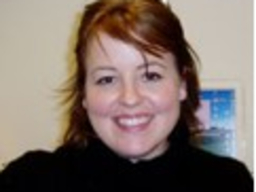CBEE Seminar: Dr. Andrea Kasko
Location
Engineering : 027
Date & Time
October 17, 2016, 12:00 pm – 12:50 pm
Description
Chemical, Biochemical and Environmental Engineering presents:
Dr. Andrea Kasko
Associate Professor, Bioengineering
Unversity of California, Los Angeles
Monday, October 17th
12:00PM
ENG 027TITLE: Hydrogel metamorphosis: materials to replicate physical transformations from biology
Hydrogels are ideal scaffolding materials for tissue engineering and regenerative medicine applications, due to their high water content and mechanical similarity to natural extracellular matrix (ECM). The design of artificial ECMs (such as hydrogels) with precisely controllable physical properties is crucial to determine the role of mechanical and physical signals in cell differentiation and disease. The physical properties of a hydrogel can be altered via polymerization/crosslinking (bond forming events) or via controlled degradation (bond breaking events). Bond forming events typically use at least some small molecule reagents (initiators, catalysts, monomers) while degradation can be used to change the physical and chemical properties of a material without the use or release of unwanted small molecule catalysts or byproducts. Because small molecules often have a higher toxicity than polymeric reagents, or may have unwanted biological activity, many research groups use degradation as a tool for in situ manipulation of polymeric biomaterials. Because photochemistry has been established as an effective method to form biomaterials under physiological conditions, integrating photochemistry as a degradation mechanism should be equally biocompatible, affording spatial and temporal control over the chemical, mechanical and physical properties of the biomaterial. Photodegradable biomaterials enable strict temporal control of the degradation process, by controlling the exposure to and dosage of light, coupled with precise spatial resolution by using photomasks and/or focused laser beams. We have synthesized a series of photodegradable linkers based on a photolabile nitrobenzylether (o-NB) moiety, whose degradation rate is a function of wavelength, molar absorptivity, and light intensity. We incorporated these photodegradable o-NB groups as linkers in hydrogel networks and developed a predictive model of (multi-stage) photodegradation and release. We have achieved multi-scale (10-7 m to 10-2 m) control over the physical properties of this system using both single and two-photon photolysis, and enhanced their sensitivity to two-photon photolysis. We have exploited the unique photophysical properties of our material to generate hydrogels with complex topographies and varying modulus, including unique swelling-induced micropatterns. Finally, by anisotropically patterning these materials, we can induce thin sheets to undergo 2D to 3D transitions in the presence of live cells.
BIO:
Andrea M. Kasko graduated from the University of Michigan with a B.S. in Chemistry, then obtained a M.S.E. in Macromolecular Science Engineering from Case Western Reserve University. She completed a PhD in Polymer Science at the University of Akron. After two years of post-doctoral research sponsored by the Howard Hughes Medical Institute, Andrea joined the Bioengineering Department at UCLA, where she is currently an Associate Professor. The overall theme of her research group is the synthesis of new polymeric biomaterials, focusing specifically in two areas: dynamically controllable biomaterials and biomimetic and bio-derived materials.
